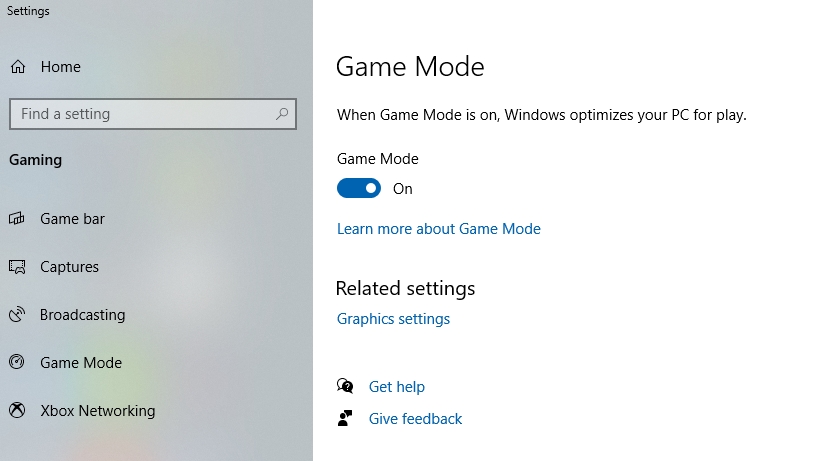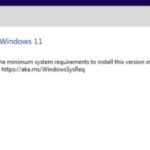Computer games have always been popular. Millions of individuals worldwide are playing games on their computers and enjoying all the options and features specially designed for good gaming.
With the ever-increasing power of video games, optimizing your Windows 10 computer for gaming has become more important than ever. While gaming consoles come equipped with the necessary hardware and settings to maximize the gaming experience, PCs require a bit more work.
Don’t sweat it; with some cool tricks up your sleeve, you can push your PC to deliver a butter-smooth gaming experience without emptying your wallet.
Table of Contents
Enable the Game Mode

For all you gaming enthusiasts using Windows, here’s a tip that might just amp up your gaming sessions: the ‘Game Mode’. Before diving into the action, it’s essential to understand what this mode is and why it could be a game-changer for you.
If you’ve ever experienced choppy or inconsistent performance while playing, enabling Game Mode could be your saving grace. The main aim? To boost those frame rates, giving you smoother visuals and gameplay. It particularly shines when you’re in the middle of those high-paced, action-packed sequences.
Is Game Mode the magic wand? Well, not exactly. While Game Mode is fantastic for enhancing your overall gaming experience, it’s not the cure-all for deeper performance issues your PC might have. It’s more like a performance-enhancing boost, giving you that extra edge during your intense gaming marathons. Think of it as a helping hand rather than a complete overhaul.
Before diving into your next game, ensure Game Mode is activated. It’s a straightforward process, but that simple step could be the difference between a good and an outstanding gaming session.
Update Graphics Drivers
Updating graphics drivers can significantly improve your PC’s performance while playing graphically intensive games. Graphics cards are a crucial component in determining the PC’s performance, and by taking the time to update the drivers, gamers can see improvements in the overall gaming experience.
Imagine your graphics card as the heart of your gaming machine, pumping out those incredible visuals you adore. Now, the graphics drivers act like the rhythm that keeps the heart functioning at its peak.
They ensure that your graphics card communicates effectively with the rest of your system. An outdated driver can cause hiccups, glitches, or even crashes, interrupting that immersive experience you crave.
Updating drivers is like giving your graphics card a fresh dose of adrenaline. It can boost performance, iron out bugs, and sometimes even unlock new features.
Especially when engaging with games that push the boundaries of graphic fidelity, having the latest drivers can mean the difference between a laggy experience and silky-smooth gameplay.
Updating your graphics drivers isn’t some arcane ritual. It’s a straightforward task. Most graphics card manufacturers offer user-friendly software that notifies you of updates and guides you through the process.
A few clicks here, a restart there, and voila! You’re back in the game, potentially with a noticeable boost in performance. And the best part? This quick tune-up barely nibbles on your precious gaming time.
Improve Network Performance
In the gaming universe, it’s not just about reflexes, strategy, or the quality of your graphics card. The unsung hero often is your network performance. A strong, stable internet connection can mean the difference between a triumphant win and a frustrating loss. Let’s deep dive into how you can ensure you’re not lagging behind (literally!).
Ever found yourself in a critical in-game moment, only to experience a lag that throws you off? That’s the sting of poor network performance. A stable connection ensures that your in-game actions are instantly reflected, giving you an edge over your competitors.
Before diving into advanced solutions, it’s essential to get the basics right. A sporadic or interrupted internet connection is a gamer’s nemesis. Here’s what to check:
- Stability: Regularly test your connection for stability. Intermittent dropouts can be more harmful than a consistently slower connection.
- WiFi Woes: Obstacles, especially metal or electronic ones, can interfere with your WiFi signal. Ensure your router is placed in a central location, away from barriers.
Ready to take things to the next level?
- Ethernet Over WiFi: If possible, plug into your router directly using an Ethernet cable. It’s generally more stable and faster than a WiFi connection.
- 5Ghz WiFi: While 2.4Ghz WiFi is more common, 5Ghz offers faster speeds and faces less interference. If your devices support it, making the switch can bring about a noticeable difference.
- Gigabit Connection: For those lucky enough, gigabit connections (1000 Mbps) offer blazing-fast speeds, ensuring your game data is transmitted in the blink of an eye.
While it might be tempting to play on that international server with your overseas friends, remember that distance can introduce lag. A closer server typically means lower latency, translating to quicker response times in your games. It’s always a balance between playing with friends and having a seamless experience.
Streamlining Windows 10: Cutting Down on the Flashy Bits
Alright, let’s chat about Windows 10 and its myriad of shiny, animated, and often memory-hungry visual effects. While these effects undoubtedly add some pizzazz to your computing experience, they might also be sipping on your system’s resources a bit too greedily.
For those looking to squeeze out some extra performance, especially gamers and power users, tweaking these settings can be a game-changer. Here’s how you can dial down on the dazzle without compromising on functionality.
Why Minimize Visual Effects?
At the end of the day, it’s all about resources. Every animation, shadow, and transparent window takes up a bit of your system’s memory and processing power. Over time, and especially if you’re running intensive programs or games, these effects can contribute to slowdowns. By minimizing them, you’re essentially freeing up resources for tasks that truly matter.
Navigating the Visual Maze: A How-to Guide
Getting into the nitty-gritty of Windows 10 settings might seem daunting, but it’s simpler than you’d think:
- Into the Settings: Head over to the ‘System’ settings, and then ‘Advanced system settings.’ You’ll find a tab labeled ‘Performance’—this is where the magic happens.
- Choosing What Stays and What Goes: Within the ‘Performance Options,’ there’s a list of visual effects. While you can let Windows decide what’s best, you might want to take matters into your own hands. Unchecking options like animations, shadows, and transparency will dial down the visual flair but boost performance.
Background Programs: The Silent Memory Eaters
But wait, there’s more! Visual effects aren’t the only culprits. Those sneaky background programs and services, many of which start up with your PC, can also be resource hogs.
- Task Manager to the Rescue: By pressing Ctrl + Shift + Esc, you’ll bring up the Task Manager. The ‘Startup’ tab will show you all the programs that boot up with your system. Disabling non-essential ones can help free up memory and reduce system load.



